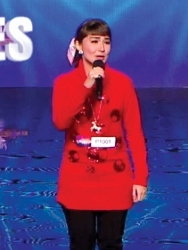BY RENATO PERDON –
They say beauty is in the eyes of the beholder. Intermarriages between Filipino women with foreigners, first appeared as a result of their colonial history and later due to the ongoing Filipino economic diaspora. Many are starting to see the many facets of the Filipina beauty in various countries, including Australia.
In my book, ‘Brown Americans of Asia’ published in Sydney in 1998, I wrote about the attraction of Australian men to Filipina women. This is in the situation where Westerners being attracted to Asian women, with many Filipino women swayed by destiny to be partners of people born out of their country.
In the past such sobriquet as ‘mail-order brides’ or ‘thriller from Manila’ could have explained full stop, such unique anecdotal attraction between the archetype hard working but lonely single Aussie and the submissive and eligible Filipina woman with limited life opportunities at home. Not anymore: I wrote then: ‘The Filipinos of today are the by-product of the fusion of the pre-European heritage and foreign influences brought about by their colonial past.
The women of the Philippines during the pre-colonial era, in most cases, shared their ethnicity with the majority of the indigenous women of Indonesia and Malaysia. Dissimilarities in race, culture and outlook reflected the varied colonial experiences they had endured’.
Overseas Attraction
Writing about Filipino women in the early 1950s, the late United States Commissioner to the Philippines, Justice George C. Malcolm aptly described Filipino women as ‘… comely. In youth, they are often young goddesses, erect in carriages, with clean golden brown skin and dark flashing eyes and, poses black tressed long enough to reach the ground. The mestizas (half breed) who are Filipino-Chinese, Filipino-Spanish, or Filipino-Americans, frequently present pleasing combination of the good points of both races.’
Robert MacMicking, originally from Scotland and who later migrated to Australia and lived in Adelaide in the mid-1850s published a similar observation on Filipino women in his ‘Recollection of Manila and the Philippines during 1848-1850’. He pictured them as very beautiful and described them as ‘dusky and the ruddiness of their blood that shone though it on the cheek created a very beautiful colour.’ Also, he admired their long hair of fine gloss and adored the dark, lustrous eyes and according to him, showed ‘intelligence and vivacity of expression.’
Born and nurtured in the crossroads of many cultures, Filipino women have achieved a delicate balance of the best of all possible worlds: Malay, Hindi, Moslem, Chinese, European and American. They enjoy a life enriched by the best of foreign cultures. Dark-eyed, delicately-boned, with the grace of a woman and ‘secure in their own femininity.’
One Filipino cultural historian explained the Filipino women’s attraction to foreigners: ‘the Chinese men find in her eyes the necessary up slant; the Japanese think she’s correctly small; the Indonesians and other Malays note happily that her skin echoes the gilded ochre of theirs; the people of the Near East note that she has the dark-eyed seductiveness of their own women; the Latinos trace her sanguine grace to their own blood; and the White Anglo Saxon like that first chronicler of the Filipino women, the 16th Century Antonio Pigafetta, comforts himself by saying that she is almost as large and as white as our girls.’
Filipino women enjoy a position unique among other women of the world. She is warm and her gentle personality imparts a certain feminine mystique all her own. She exhibits an exuberance of spirit that induces a sense of well being and a good will. Like the bamboo that bends with the wind, Filipino women give the impression of carefree life and open-heartedness.
One author reasoned out that: ‘adaptability and congeniality are two traits that account for Filipino women attractiveness to foreigners.’ In 1914, an American journalist visiting the Philippines observed that Filipino women are the ‘freest woman of the Orient, unhampered by the caste of Hindu, the little shoe of Chinese women or the social convention which hem in Japanese women.’
Stereotyping
Although not referring to the Filipino women alone, a study made, not long ago, by an Australian psychologist shows that scientifically there is truth to the stereotyping of women who are product of mixed European and Asian marriages as attractive and have the right ‘look’, the way the famous writer Somerset Maugham than 80 years ago.
The Australian study rated average Eurasian faces as more attractive than average face of other race. It regarded Eurasian face as healthier and ‘giving credence to theory that beauty is not solely determined by culture and the media, but has biological origins.’
According to Professor Gillian Rhodes of the University of Western Australia and heads the survey, the study shows that our concept of beauty is ‘shaped by evolution.’ This is the reason why celebrities of mixed race ancestry such as Keannu Reeves, Tia Carrere, or model Devon Aoki, a product of Anglo-Bavarian mother and a Japanese father, is very popular.
From the book “Connecting Two Cultures” Manila Prints, Manila by the author the late Renato Perdon of Sydney








Leave a Reply